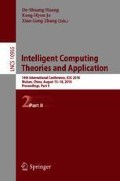Abstract
The automatic segmentation of kidneys in medical images is not a trivial task when the subjects undergoing the medical examination are affected by Autosomal Dominant Polycystic Kidney Disease.
In this work, two different approaches based on Deep Learning using Convolutional Neural Networks (CNNs) for the semantic segmentation of images containing polycystic kidneys are described, leading to a fully-automated classification of each pixel of the images without the need to extract hand-crafted features. In details, the first approach performs the automatic segmentation of the kidney considering the whole image as input, without any pre-processing. Conversely, the second approach is based on a two-steps classification procedure constituted by a CNN for the automatic detection of Regions of Interest (ROIs), according to the R-CNN approach, and a subsequent convolutional classifier performing the semantic segmentation on the ROIs previously extracted.
Results for both the approaches are reported considering different metrics evaluated on the test set. Even though the R-CNN shows an overall high number of false positives, the subsequent semantic segmentation on the extracted ROIs allows achieving good performance in terms of mean accuracy. Moreover, the results show that both the investigated approaches seem to be reliable for the automatic segmentation of polycystic kidneys, as in both the cases an accuracy of about 85% was reached.
Access this chapter
Tax calculation will be finalised at checkout
Purchases are for personal use only
References
Brunetti, A., Buongiorno, D., Trotta, G.F., Bevilacqua, V.: Computer vision and deep learning techniques for pedestrian detection and tracking: a survey. Neurocomputing (2018). https://doi.org/10.1016/j.neucom.2018.01.092
Litjens, G., Kooi, T., Bejnordi, B.E., Setio, A.A.A., Ciompi, F., Ghafoorian, M., van der Laak, J.A.W.M., van Ginneken, B., Sánchez, C.I.: A survey on deep learning in medical image analysis. Med. Image Anal. (2017). https://doi.org/10.1016/j.media.2017.07.005
Badrinarayanan, V., Kendall, A., Cipolla, R.: SegNet: a deep convolutional encoder-decoder architecture for image segmentation. IEEE Trans. Pattern Anal. Mach. Intell. 39, 2481–2495 (2017). https://doi.org/10.1109/tpami.2016.2644615
Brostow, G.J., Fauqueur, J., Cipolla, R.: Semantic object classes in video: a high-definition ground truth database. Pattern Recognit. Lett. 30, 88–97 (2009). https://doi.org/10.1016/j.patrec.2008.04.005
Bevilacqua, V., et al.: A supervised breast lesion images classification from tomosynthesis technique. In: Huang, D.-S., Jo, K.-H., Figueroa-García, J.C. (eds.) ICIC 2017. LNCS, vol. 10362, pp. 483–489. Springer, Cham (2017). https://doi.org/10.1007/978-3-319-63312-1_42
Girshick, R.: Fast R-CNN. In: Proceedings of the IEEE International Conference on Computer Vision, pp. 1440–1448 (2015). https://doi.org/10.1109/iccv.2015.169
Acknowledgment
This work has been partially funded from the PON MISE 2014-2020 “HORIZON2020” program - project PRE.MED - Innovative and integrated platform for the predictive diagnosis of the risk of progression of chronic kidney disease, targeted therapy and proactive assistance for patients with autosomal dominant polycystic genetic disease.
Author information
Authors and Affiliations
Corresponding author
Editor information
Editors and Affiliations
Rights and permissions
Copyright information
© 2018 Springer International Publishing AG, part of Springer Nature
About this paper
Cite this paper
Bevilacqua, V., Brunetti, A., Cascarano, G.D., Palmieri, F., Guerriero, A., Moschetta, M. (2018). A Deep Learning Approach for the Automatic Detection and Segmentation in Autosomal Dominant Polycystic Kidney Disease Based on Magnetic Resonance Images. In: Huang, DS., Jo, KH., Zhang, XL. (eds) Intelligent Computing Theories and Application. ICIC 2018. Lecture Notes in Computer Science(), vol 10955. Springer, Cham. https://doi.org/10.1007/978-3-319-95933-7_73
Download citation
DOI: https://doi.org/10.1007/978-3-319-95933-7_73
Published:
Publisher Name: Springer, Cham
Print ISBN: 978-3-319-95932-0
Online ISBN: 978-3-319-95933-7
eBook Packages: Computer ScienceComputer Science (R0)

